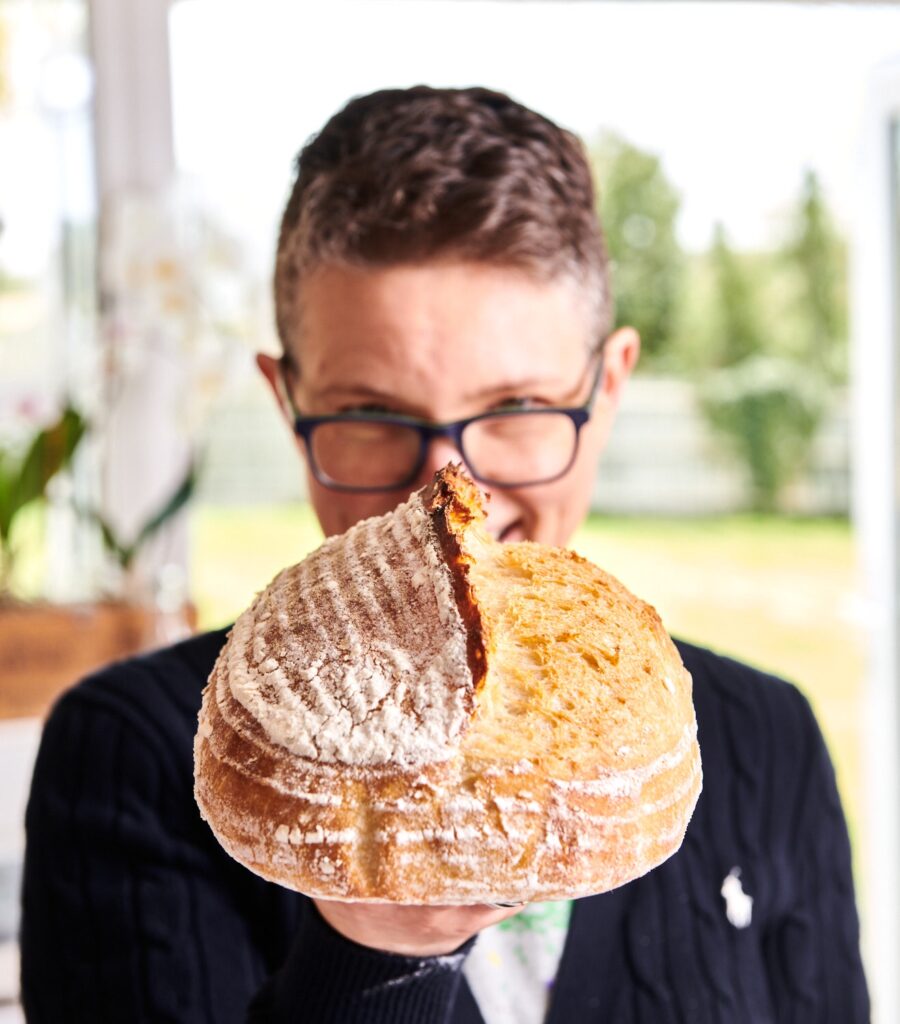
Is this you: you feel that your sourdough could be better, it doesn’t look or taste or resemble what you want it to, you know you shouldn’t compare yours with others but you can’t help it and you want to figure out what you need to do differently? So, you’ve read everything, followed the steps, done everything you think you can to get this ‘right’ for you, but you still think it could be something more, and you still don’t know what you’re missing? So, what’s the missing piece of the puzzle? What’s your missing detail?
Well, I’m here to tell you, there’s always an answer, there’s always a specific reason something is happening, or not happening as you’d like it to. Whether you feel your loaves are flatter than you’d like, whether your starter isn’t behaving as you feel it should, whether your dough didn’t grow, or it’s too soft, or it’s liquid…whatever the issue, there’s always always a particular reason.
The trick is to find it.
There isn’t any one single answer for everyone, all sourdough experiences are different, which is why you’ll find lots of help and suggestions throughout my site and my book, but first, let me ask you:
What’s your missing detail?
And this is why I ask that question: when people contact me for help I ask as many questions as possible to solve the mystery, but there is so often something they don’t say and it’s that that tends to be the main missing piece of the puzzle. The things that people often think aren’t important, or forget to tell me, or are a throwaway afterthought, are often the vital piece of information that can fix things. And it can be as simple as that one thing being the answer to your sourdough question.
So what aren’t you telling me?
What is the missing piece of your puzzle that’s right in front of you without you releasing that it’s your answer. Let me give you a few examples of what this might be…
“I wet my hands each time I handle the dough”
“I live at high altitude”
“I changed my flour”
“I have an aga”
“My kitchen is always warm”
“I have been putting starter/dough in the oven with the light on all night”
“My flour is quite old”
“I use distilled water in my starter”
“My banneton is 25cm wide”
“I’m really gentle with the dough, I don’t want to squash the bubbles”
“I just tip the dough into my banneton”
“The temperatures here have risen/dropped recently”
“I didn’t do this step…”
These scenarios are all from many conversations that I’ve had, each of which has come up more than once, and they all make a difference to the outcome of your sourdough making, so if any of these things ring a bell for you, there’s your issue…and even if it’s not one of these, if you are having an issue, don’t skip any tiny detail, it could be your very simple answer.
To answer those comments above:
“I wet my hands each time I handle the dough”
This means you’re constantly adding more water to your carefully measured dough. The dough will therefore be wetter than you planned it to be and it will be unlikely to be able to hold the shape you hoped it would.
“I live at high altitude”
This will affect the doughs behaviour and easily leads to over proving. Use less starter to prevent that.
“I changed my flour”
Changing flour makes ALL the difference, they are not merely interchangeable without needing to make adjustments in your dough.
“I have an aga”
And..
“My kitchen is always warm”
This will affect how the dough proves and can lead to over proving. To prevent this, use less starter.
“I have been putting starter/dough in the oven with the light on all night”
This will make a starter thin and weak, and dough will over prove. It’s too warm for too long a time and not necessary.
“My flour is quite old”
The flour will have therefore lost some oomph and not behave as you expect it to.
“I use distilled water in my starter”
This can prevent your starter from growing.
“My banneton is 25cm wide”
Assuming you are using 500g flour in your dough, this is too big and your loaf will bake wide and flat.
“I’m really gentle with the dough, I don’t want to squash the bubbles”
Or..
“I just tip the dough into my banneton”
Your dough will have no structure and will spread as soon as you turn it out.
“The temperatures here have risen/dropped recently”
Weather and room temp massively affect how dough proves.
“I didn’t do this step…”
Leaving out a step in a sourdough recipe is your prerogative of course, but all of the steps are there for a reason.
I hope this all helps x
